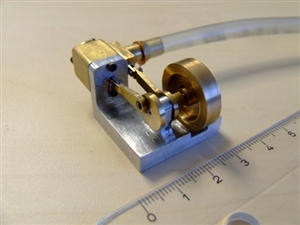
Arran Cameron:
Somebody will know the answer to this…
Almost all British machinery manufactured before 1950 used Whitworth, BSF, or BA fasteners. Manufacturers moved towards using metric fasteners in the 1970s and these have been the most commonly available and used family since 1980, although the proposal to use metric fasteners dates back 1965. Whitworth and BSF officially became obsolete in 1948 following an agreement between the UK, US, and Canada to standardise on the American UNC and UNF fasteners for future use. UNC and UNF fasteners were used in British machinery manufactured in the 1950s, 60s, and 70s where they gradually replaced Whitworth and BSF before themselves being replaced by metric fasteners.
1. Were UNC and UNF fasteners used across most industries in the UK or were they largely confined to specific industries such as automotive and machine tools? Were they regularly used in railways or shipbuilding?
2. Were the numbered sizes smaller than ¼ inch commonly used or did industry stick with BA fasteners until they moved to using metric fasteners?
3. Were UNC and UNF fasteners commonly used in construction? What are the most common family of fasteners used to hold together 1960s tower blocks and university buildings?
4. Was it easy to buy UNC and UNF fasteners from hardware and DIY shops in the 1960s and 70s or did they move directly from selling Whitworth and BA fasteners to metric fasteners?
Re: UNC and UNF fasteners in Britain
Posted by mapj1 on Jun 5, 2019 4:09 pm
I fear, as 2BA is about 4 or 5mm dia, and thread pitch 0.81mm (0BA is practically M6, 6mm dia, and 1mm pitch, and each higher BA size is 90% of the dimensions of the preceding.)
You may not find it possible to get a gauge that is thin enough to fit down hole and engage sufficiently convincingly to be sure. Depending on the hole depth and the how much is damaged it may be safer to taper ream the damaged turns until a bolt fits. (and note that a brass bolt will reveal binding without damaging the steel, though go gently, you do not wish to snap the head off.)regards Mike
Denis McMahon:
I think one reason why BA did not catch on is because...
Hi Denis,
Actually I think BA was pretty successful in the UK, but just in - as you sort of suggest - those niche industries where all the fastenings were of small dimensions. It seemed pretty standard across the electronics industry when I started. British Rail signalling was largely constructed out of BA screws - and large bits of it still are! (For interest I just checked the current Unipart Rail Catalogue - the UK Rail Industry's equivalent to the RS Catalogue - and it still lists a huge range of BA fixings available for sale.) IIRC, the Post Office telephone system was BA based too.
But of course once ISO came in to the UK it was much easier to use that everywhere for new designs.
Couldn't agree more that eBay is our friend here, I've also been buying BA screws (because I occasionally dabble in model engineering) as well as the above discussed-to-death BSF. It's strange that it's much easier to buy these sizes now than it was 15 years ago, just because it's easier to locate those companies that supply them. Nice mix of old and new technologies coming together.
Cheers, Andy
We're about to take you to the IET registration website. Don't worry though, you'll be sent straight back to the community after completing the registration.
Continue to the IET registration site